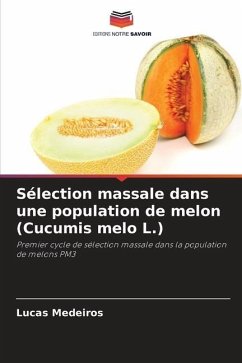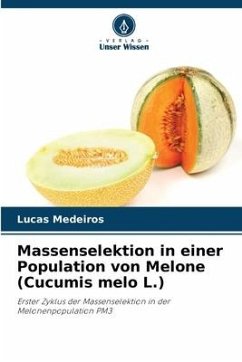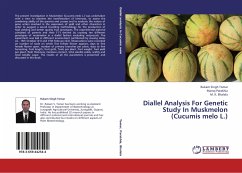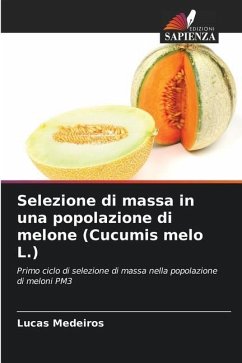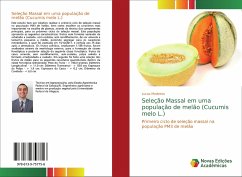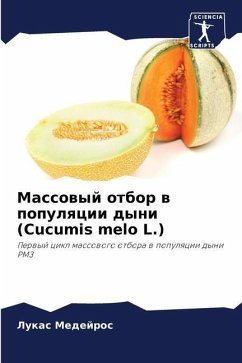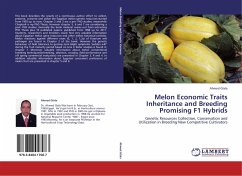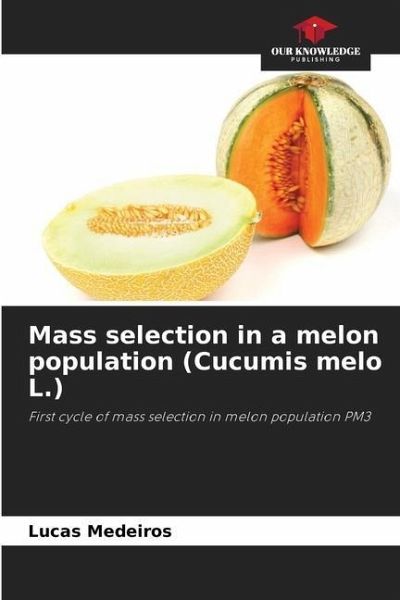
Mass selection in a melon population (Cucumis melo L.)
Versandkostenfrei!
Versandfertig in 6-10 Tagen
27,99 €
inkl. MwSt.

PAYBACK Punkte
14 °P sammeln!
This study aimed to carry out the first cycle of mass selection in the PM3 melon population, as well as to choose the most important characters in the choice of plants, through the principal components technique, for the next cycles of mass selection. This population has the following characteristics: fruits with a shape ranging from flat to oval, with ribs, without lacy, yellow in colour and small to medium size, which can segregate for Mendelian characters, which was planted on 15/12/2011, and harvested at 75 days after sowing. The harvested fruits, totalling 1,188 fruits, were analysed thro...
This study aimed to carry out the first cycle of mass selection in the PM3 melon population, as well as to choose the most important characters in the choice of plants, through the principal components technique, for the next cycles of mass selection. This population has the following characteristics: fruits with a shape ranging from flat to oval, with ribs, without lacy, yellow in colour and small to medium size, which can segregate for Mendelian characters, which was planted on 15/12/2011, and harvested at 75 days after sowing. The harvested fruits, totalling 1,188 fruits, were analysed through external morphology, for the formation of phenotypic classes and subsequent selection of the following phenotypic class: fruits with yellow skin, without lace, without ribs, salmon flesh and round to oval shape. The melon fruits were then selected for the following quantitative characters within the selected phenotypic class: Fruit Weight - > 740.0 grams; Longitudinal Diameter - > 11.0 cm; Transverse Diameter - > 10.0 cm, Pulp Thickness - > 1.9 cm; Peel Thickness - > 0.2 cm; Cavity Diameter - < 8.0 cm.



